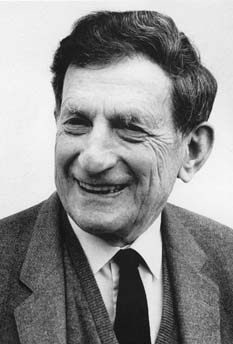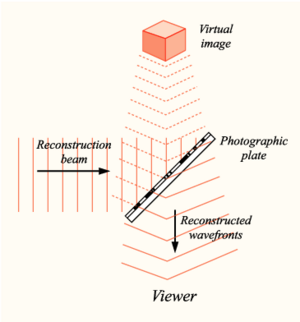David Bohm facts for kids
Quick facts for kids
David Bohm
|
|
|---|---|
 |
|
| Born | 20 December 1917 |
| Died | 27 October 1992 (aged 74) London, England, UK
|
| Nationality | American-Brazilian-British |
| Citizenship |
|
| Alma mater | |
| Known for |
|
| Awards |
|
| Scientific career | |
| Fields | Theoretical physics |
| Institutions | |
| Doctoral advisor | Robert Oppenheimer |
| Doctoral students |
|
| Influences | Albert Einstein Jiddu Krishnamurti |
| Influenced | John Stewart Bell, Peter Senge |
David Joseph Bohm (born December 20, 1917 – died October 27, 1992) was a very important scientist. He was an American, Brazilian, and British physicist. Many people consider him one of the most significant theoretical physicists of the 20th century.
Bohm had many new and unusual ideas about quantum mechanics, which studies the smallest particles. He also thought deeply about how our brains work and the nature of the mind. One of his most famous ideas is the De Broglie–Bohm theory. This theory offers a different way to understand quantum physics.
David Bohm believed that our traditional way of thinking about reality was too simple. He thought that the physical world and our minds are deeply connected. To explain this, he developed ideas about "implicate" and "explicate" orders. He also suggested that our brains might work in ways similar to quantum effects. Bohm was very interested in understanding reality and consciousness as one complete whole.
He also believed in the importance of real, open discussions. He thought that such talks could help people understand each other better. This could help solve problems in society. Bohm was born in the United States. He later moved to other countries due to political issues. He became a citizen of Brazil and then Britain.
Contents
Early Life and Education
David Bohm was born in Wilkes-Barre, Pennsylvania, USA. His father was a Hungarian Jewish immigrant, and his mother was Lithuanian Jewish. His father owned a furniture store. David grew up mainly with his father. He became an agnostic, meaning he wasn't sure about God, during his teenage years.
Bohm went to Pennsylvania State University. He graduated in 1939. Then he studied for a year at the California Institute of Technology. After that, he moved to the University of California, Berkeley. There, he joined a group studying theoretical physics. This group was led by J. Robert Oppenheimer, who later became famous for his work on the atomic bomb. Bohm earned his doctorate degree there.
While at Berkeley, Bohm became interested in political groups. He was involved with some organizations that supported workers' rights and peace.
Work During World War II
Manhattan Project Connections
During World War II, many scientists at Berkeley worked on the Manhattan Project. This secret project aimed to build the first atomic bomb. Oppenheimer wanted Bohm to work with him at Los Alamos National Laboratory. This was the top-secret lab for designing the bomb.
However, the project's director, General Leslie Groves, did not allow Bohm to join. This was because of Bohm's political beliefs. He also had a close friendship with a colleague who was suspected of being a spy.
So, Bohm stayed at Berkeley during the war. He taught physics and researched plasma. He also studied machines called the synchrotron and synchrocyclotron.
Completing His PhD
Bohm finished his PhD in 1943 in a very unusual way. The calculations he had done for his research were very useful for the Manhattan Project. Because they were so important, they were immediately classified as secret. This meant Bohm could not even see his own work! He wasn't allowed to defend his thesis or even write it.
To solve this, Oppenheimer confirmed that Bohm had successfully completed his research. This allowed Bohm to get his PhD. Later, Bohm did more calculations for a facility in Oak Ridge, Tennessee. These calculations helped in making the uranium for the bomb dropped on Hiroshima in 1945.
Moving Abroad and New Discoveries
Leaving the United States
After the war, Bohm became a professor at Princeton University. He also worked closely with Albert Einstein. In 1949, a government committee called the House Un-American Activities Committee asked Bohm to testify. They wanted to question him about his past political connections.
Bohm refused to answer their questions. He also refused to give information about his colleagues. In 1950, he was arrested for this. He was found not guilty in 1951. But Princeton University had already suspended him. Even though his colleagues wanted him back, Princeton did not renew his contract. Oppenheimer advised Bohm to leave the country.
So, Bohm left the U.S. He went to Brazil to become a physics professor at the University of São Paulo. Both Einstein and Oppenheimer recommended him for the job.
Quantum Theory and Bohm Diffusion
While in Brazil, Bohm made important contributions to physics. He developed a theory about plasmas. He discovered a phenomenon called Bohm diffusion, which describes how electrons move in plasma.
In 1951, he published his first book, Quantum Theory. Albert Einstein liked this book. However, Bohm soon became unhappy with the standard way of understanding quantum theory. He started to develop his own ideas.
Bohm wanted to show that it was possible to describe an underlying reality in quantum physics. He developed what is now called the De Broglie–Bohm theory. It is also known as the pilot wave theory. This theory's predictions matched the standard quantum theory perfectly. Bohm and his colleague Basil Hiley later explained that their theory described variables that were not truly "hidden."
Life in Brazil and Israel
Bohm arrived in Brazil in October 1951. The U.S. Consul took his passport. They told him he could only get it back to return to the U.S. This made Bohm very sad. He had hoped to travel to Europe. He applied for and received Brazilian citizenship. This meant he had to give up his U.S. citizenship. He was able to get it back only in 1986.
At the University of São Paulo, Bohm worked on his new theory. Many physicists did not accept his ideas. They preferred the standard Copenhagen interpretation of quantum mechanics.
In 1955, Bohm moved to Israel. He worked at the Technion in Haifa for two years. There, he met Sarah Woolfson, and they married in 1956.
Aharonov–Bohm Effect
In 1957, Bohm moved to the United Kingdom. He became a research fellow at the University of Bristol. In 1959, Bohm and his student Yakir Aharonov discovered the Aharonov–Bohm effect. This effect showed that a magnetic field could affect a region of space even if the field itself was blocked. This proved that the magnetic vector potential, a mathematical concept, could have real physical effects.
In 1961, Bohm became a professor of theoretical physics at Birkbeck, University of London. He retired in 1987.
New Ideas on Reality and Mind
Implicate and Explicate Order
At Birkbeck College, Bohm and Basil Hiley worked on the idea of "implicate" and "explicate" orders. They believed that things like particles and objects are "semi-autonomous quasi-local features." This means they are parts of a deeper, underlying activity. They used the word "holomovement" to describe this activity.
Brain and Holograms
Bohm also worked with neuroscientist Karl H. Pribram. They developed the holonomic model of the brain. This model suggests that the brain works like a hologram. It follows quantum mathematical rules and wave patterns. In a hologram, each small part contains information about the whole image. They thought the brain might work in a similar way.
Consciousness and Thought
Besides his science, Bohm was very interested in consciousness. He focused on how our thoughts relate to attention, motivation, and conflicts. These ideas grew from his earlier interest in philosophy. He had many discussions with the philosopher Jiddu Krishnamurti, starting in 1961. Their talks lasted for 25 years and were published in books.
Some scientists were unsure about Bohm's deep involvement with Krishnamurti's philosophy. However, later studies showed that Bohm's work on the mind fit well with his physics.
Bohm's ideas on thought were shared in a seminar in 1990. He explained that thought is a tool we use to solve all kinds of problems. But he also said that thought can accidentally create many of these problems. He saw this as ironic, like getting sick from going to the doctor.
Bohm believed that thought is a system. It's a connected network of ideas and beliefs that spread through society. If there's a problem with how we think, it affects the whole system. So, the same flaw that created a problem might be present in the thinking used to solve it.
He said that thought often pretends to be objective. But it can actually change how we see things in unexpected ways. To fix this, Bohm suggested a kind of "self-awareness" for our thoughts. Just as our bodies know their position, we need to be aware of our thinking process. This would help us see and correct the unintended results of our thoughts.
Bohm Dialogue
In his later years, Bohm proposed a way to solve societal problems. This is known as "Bohm Dialogue". In this dialogue, everyone has equal status. There is a "free space" for communication. People are encouraged to appreciate different beliefs. A key part of this dialogue is to "suspend" immediate judgment. This allows people to become aware of their own thought processes. Bohm believed that if many groups practiced this dialogue, it could help overcome the isolation and divisions in society.
Later Life and Legacy
David Bohm continued his work in quantum physics after retiring in 1987. His last book, The Undivided Universe: An Ontological Interpretation of Quantum Theory, was published after he died. He also gave talks about the importance of dialogue. He met with the Dalai Lama several times. In 1990, he was elected a Fellow of the Royal Society.
Near the end of his life, Bohm experienced health challenges. He passed away from a heart attack in London on October 27, 1992, at age 74.
A film called Infinite Potential is based on Bohm's life and studies.
See also
 In Spanish: David Bohm para niños
In Spanish: David Bohm para niños
- American philosophy
- Bohm sheath criterion
- List of American philosophers
- Karl H. Pribram
- Quantum mind#Bohm
- The Holographic Universe
Sources
(information on Bohm's work at Berkeley and his dealings with HUAC)
(transcript of seminar held in Ojai, California, from 30 November to 2 December 1990)


